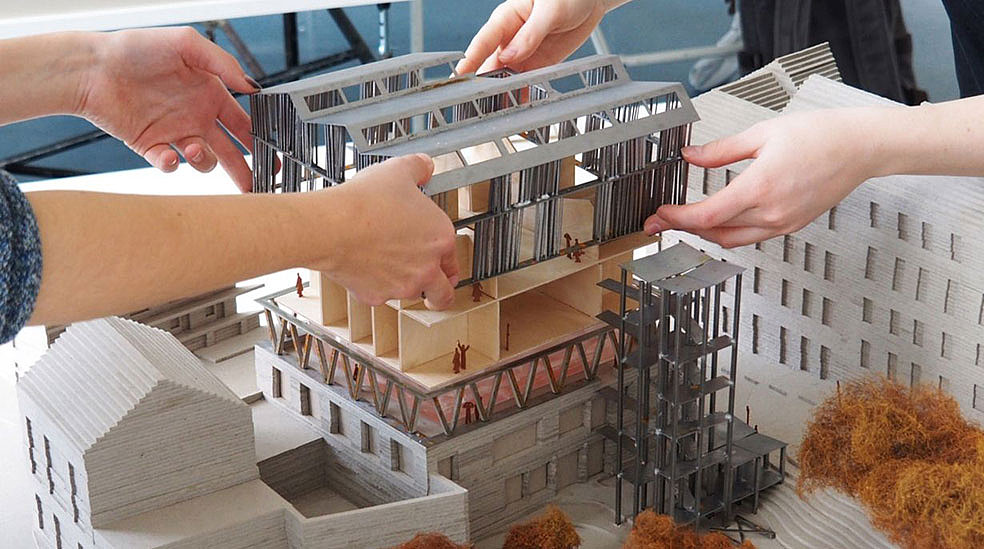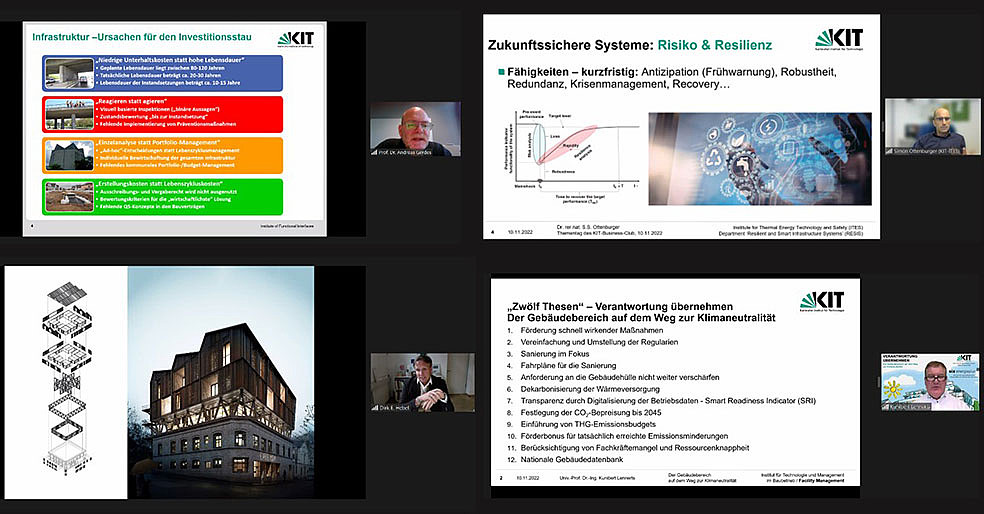Published on December 05, 2022
Second Life for old tiles
Did you know that a significant share of resource consumption is attributed to the construction and use of buildings and infrastructure? The two sectors are credited with nearly 40 percent of global carbon dioxide emissions (UNEP 2020 GLOBAL STATUS REPORT FOR BUILDINGS AND CONSTRUCTION). Cement production by itself generates more than 2,000 Mt of CO2 per year worldwide (IEA (2022), Cement, IEA, Paris, License: CC BY 4.0), which is equivalent to more than 5 percent of global annual emissions. In addition, construction involves the use of large quantities of mineral or metallic raw materials.
Efforts in the construction sector are therefore essential to achieve global climate goals and reduce the world's consumption of raw materials, as the United Nations Sustainability Goals also point out. So how does one achieve sustainability and resilience in buildings and infrastructures? Experts from KIT provided exciting insights into technologies and solution approaches for future urban spaces, infrastructures, and buildings at the KIT Business Club's "Sustainability and Resilience by Design" theme day under the patronage of Prof. Thomas Hirth, KIT Vice President for Transfer and International Affairs.
Sow, gather and save
One option for climate protection and resource conservation are new, more sustainable building materials. Examples include new types of concrete whose production has a low carbon footprint, or innovative renewable material classes, such as mushroom structures, as substitutes for conventional materials. However, the use of sustainable building materials alone will not be sufficient and must be complemented by greater reuse of used recyclables and components.
Today, recycled materials in Germany are often only used or regarded as low-quality products. But new recycling processes can change this. An important starting point for recyclability lies in the design of a building. This can be easily understood by looking at a simple building made of clamping bricks: If the entire life cycle is considered right from the planning stage, components can be designed from the outset in such a way that it is possible to dismantle modules and entire building sections. Such building components, which stand on their own, can then be given a second life, known as second use, or a recycling process much more easily.
The key is to reduce the overall use of materials, the KIT experts agreed, breaking it down to a simple formula: Less new construction, more refurbishment. Material consumption and CO2 emissions are significantly higher for new buildings than for refurbishments. In the event that a new building is nevertheless unavoidable, it must be designed for longevity and sustainable maintenance concepts must be in place. The focus in the planning of a building today, however, is often on the construction costs and not on the life cycle costs. As a result, maintenance and preventive measures cannot be carried out consistently and the actual service life is significantly reduced compared to the initially planned service life.
Digital construction is essential
Without digitalization, many of the above-mentioned possibilities would be inconceivable. Models and simulation solutions, for example, are important aids in determining CO2 emissions over entire life cycles. Digital twins and documentation of buildings enable the creation of digital material databases, forecasts of availability and marketplaces for second-hand raw materials or components. The use of old components is made possible by precisely fitting digital planning tools in the planning of refurbishment or new construction.
Digitalization is affecting building management in a similarly comprehensive way. Building automation or AI-based image analyses allow smart concepts for energy management and the large-scale determination of heating or cooling requirements. They help as decision support in planning renovations and managing limited resources. Digital space utilization data also enable predictive planning of building services, such as cleaning services. In the future, a "Smart Readiness Index" could help here – a measure of the degree of digitization of a building, the development of which KIT is currently initiating.
When planning future-proof infrastructures and buildings, the focus is not only on sustainability but also on resilience. In other words, building, positioning, and designing facilities in such a way that the system as a whole is more resistant to crises and can maintain its function in a stable manner. For this resilience management, IT-based analyses and optimizations play a key role in capturing the complexity of the systems and enabling robust decision support.
What do we take along?
The theme day has shown that the toolbox of approaches and tools for more sustainable and resilient buildings, infrastructures, and cities is bulging. The fact that KIT researchers provide important impulses with their application-oriented solutions could be seen in the lively discussion with the participants from about 15 business enterprises. In addition to topics such as future urban planning, very practical points came up: For example, the sluggish development of regulatory requirements or ambiguities in the interpretation of CO2 footprint analyses. Guests and speakers alike emphasized the importance of economic efficiency and cost-effectiveness of the various measures for their successful implementation. Sustainability, resource conservation and resilience in buildings and infrastructure is a complex task in a complex system. Time is pressing. Only cooperation between politics, society, science, and industry can solve this mammoth task. KIT is ready for cooperation.
The KIT Business Club would like to thank the guests and speakers for this great theme day for interesting lectures, exciting discussions and open dialogs: Prof. Andreas Gerdes, Institute of Functional Interfaces | Dr. Sadeeb Simon Ottenburger, Institute for Thermal Energy Technology and Safety | Prof. Kunibert Lennerts, Institute for Technology Management in Construction | Prof. Dirk Hebel, Institute for Building Design and Technology | Dr. Rebekka Volk, Institute for Industrial Production.



comments about this article
No comments